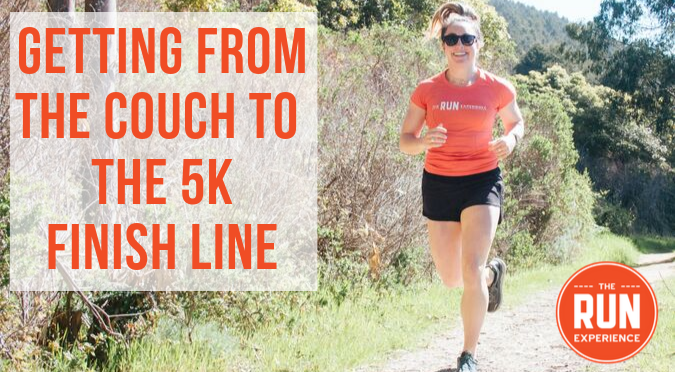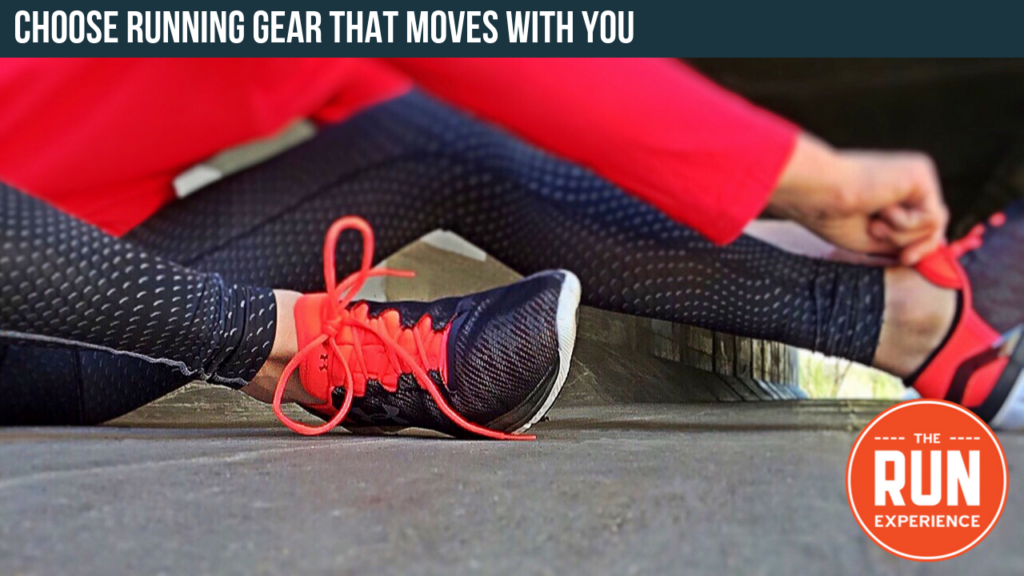Couch to 5k Plan: Prepare for Your First Race with These Tips

If you’re a newbie just getting started out with running for the first time, imagining that you’re toeing the line for your first 5k can seem daunting. We’ve got you! Follow our plan to get off the couch and on the run with a Couch to 5k plan. Before you know it, you’ll master 3.1 miles and be working your way towards the finish line of 10k’s and half marathons.
First, let’s follow along with Coach Holly to discover her best couch to 5k plan tips for new runners:
What to Wear
There’s a difference between coach potato attire and running gear. You want to be comfortable and allow your body to move. If it’s a sunny day, you’re going to want to wear a hat and sunglasses to keep you cool and protect your skin from the sun. Make sure your sunglasses are lightweight and don’t move around your face.
Shorts and t-shirts are a staple for a warm, sunny day. Consider a shirt made out of lightweight fabric or dri-fit material so it says dry and allows your skin to breathe rather than 100% cotton, which can trap heat in. Leggings are also a good choice for colder days–they move with you and absorb sweat easily. On colder runs, you can also layer a jacket or long sleeve shirt on top so you can remove a layer once you get warmed up.

Let’s move to the feet. Socks are just as important as shoes. Buy socks that are designed for runners–they should hug your feet and absorb sweat well to help prevent blisters. If you’re buying your first pair of running shoes, visit a local running store and try out a few pairs.
They will have experts available to help you pick what works well for you.
Keep in mind, many runners like to go up one-half size from their normal shoe size when picking out running shoes. You want to have plenty of room for your feet to move especially since they will swell just a bit when you’re running for extended periods of time.
Hydration Technique for Your Training Program
Before we get into how important hydration is for runners, let’s address why we sweat in the first place. When you get your heart rate up, your body sweats through your pores to regulate your temperature. When you sweat, you lose fluids that you need to replenish. You want to stay ahead of losing it, so it’s important to hydrate all day, even on rest days.
It’s a great idea to carry a water bottle with you at all times and get into a good habit of drinking water throughout the day. Consider using an aluminum water bottle that keeps your water cold for at least 24 hours. Consuming two liters of water per day is a good rule of thumb, adding more on days that you run.
Training Time of Day
Training at the same time of day is very valuable. It gets your body used to being active at the same time, and it helps establish a habit and helps you stay committed to your running plan. Furthermore, variations in the training time of the day will affect your muscle recovery.
Play with different times of the day to see what works best for you. You may not typically be a morning person, but some people who usually have a hard time getting up in the morning find a morning run is the best way to energize the start of the day. Others like to de-stress from a long workday sitting at a desk with vigorous physical activity.
When you eat is also a good indicator of how you should set up your training schedule. Some people can eat a meal and hit the road in an hour, but some runners have more sensitive stomachs. Personally, I like to have a pretty empty stomach before I run–otherwise, I’m likely to get stomach cramps.
Staying Motivated
Once you commit to going from a couch potato an avid runner and preparing for your first race day with a couch to 5k plan, it’s critical to stay motivated. Consider telling a friend or family member about your workouts and asking them to keep you accountable. If you have to tell someone about your training, you’re more likely to stick with it.
It’s also a great idea to find a group to train with or even just one running buddy. It creates built-in accountability, and there are few better ways to build long-lasting friendships like the ones people who run together develop. If you don’t have any local groups or can’t find a running partner, join an online forum or community, such as The Run Experience Training Club!
Couch to 5k Workouts
Now that we’ve got the basics down, let’s dive into three specific workouts for a couch to 5k plan–we’ll describe what a good weekly training plan looks like. It’s going to be hard at first, but the goal here is to get to a point where you can sustain a good pace, breathe easier while you run, and run longer each week.
1. The Walk/Run Workout
This first workout is focused on increasing the distance you can run in a manageable way, and it’s pretty simple. Run or jog for 30 seconds, then allow your body to recover by walking for 30 seconds. This breaks things up and lets your body get comfortable with running.
Start your first week with just 10 minutes of running for 30 seconds and walking for 30 seconds. Increase the workout by five minutes each week until you are up to 30 minutes. Before you know it, you’ll be skipping some of those 30 second walk periods or shortening them.
2. Slight Incline Intervals
This next workout focuses on increasing the intensity of your run and getting through the struggle barrier. You’ve got this! You’ll still be working with 30 seconds of running and 30 seconds of rest, but the hill makes it more challenging and builds endurance.
Find a shallow hill that’s not too steep–one you can run rather than walk. Run for 30 seconds up the incline, then turn around and walk or jog slowly down. Repeat for six to eight rounds. If you start out at six, try to add one or two more in the following weeks.
3. Incorporating Strength Training
This workout introduces strength training that directly relates to your running. You’ll stick with the 30 seconds on, 30 seconds off format while incorporating air squats in between running and resting. This helps promote keeping your hips forward while running.
So, run for 30 seconds, do five air squats, then walk for whatever is left of your 30 second rest period. To do an air squat, start with your feet placed hips-width apart and your toes pointed straight ahead. Sit your hips back, keep your back straight, and sink into a squat. Your main focus should be pushing your hips forward and squeezing your butt at the top of the squat.
This reinforces keeping your hips forward while running for better posture, relaxed shoulders, and more efficient running overall.
That’s it! Follow these tips to get off the couch and training for your first 5k. Finally, don’t forget to download our new mobile app for access to coaching advice, daily video workouts, injury prevention tips, and complete training programs that will help motivate and inspire your couch to 5k running program.
